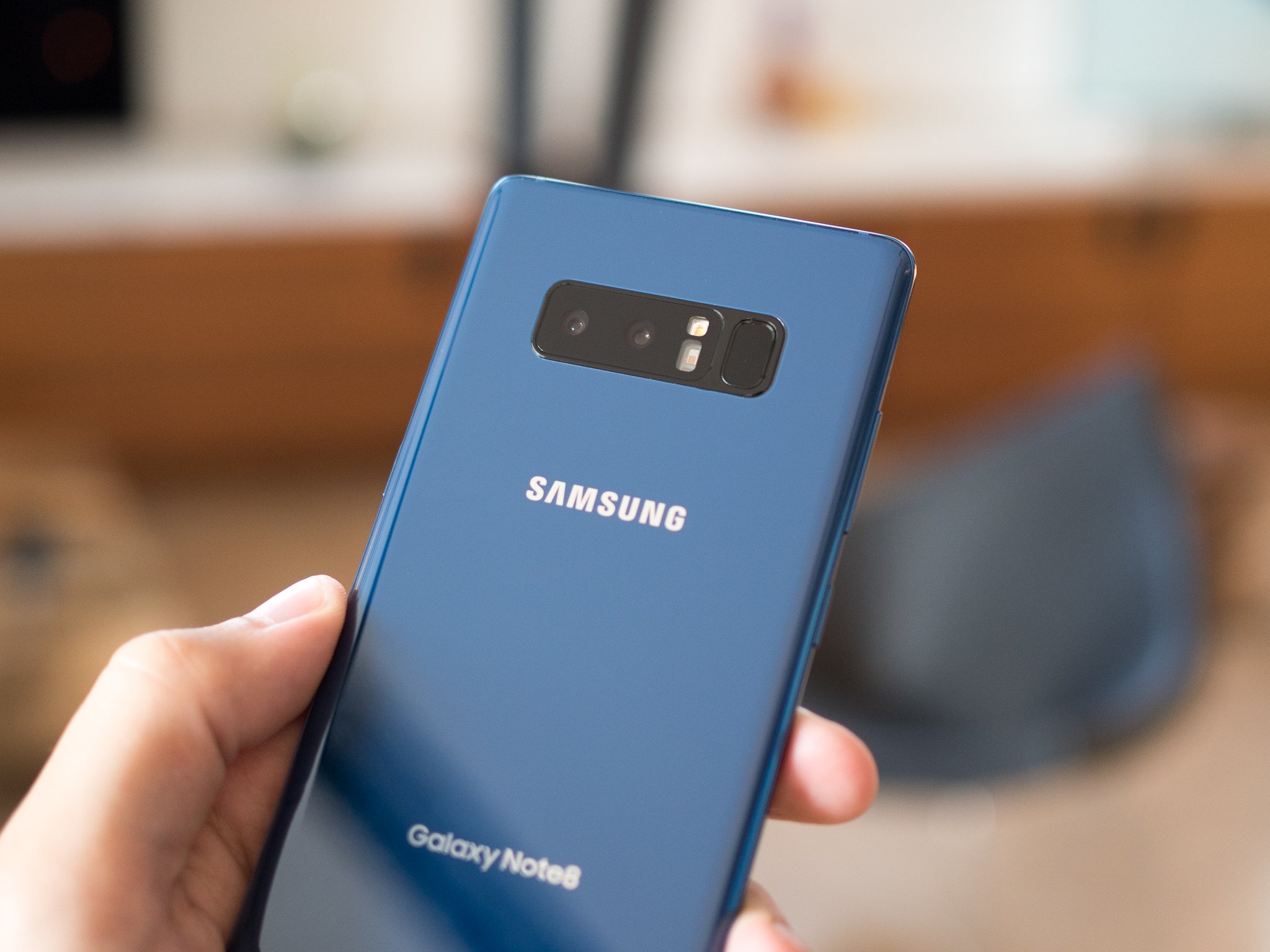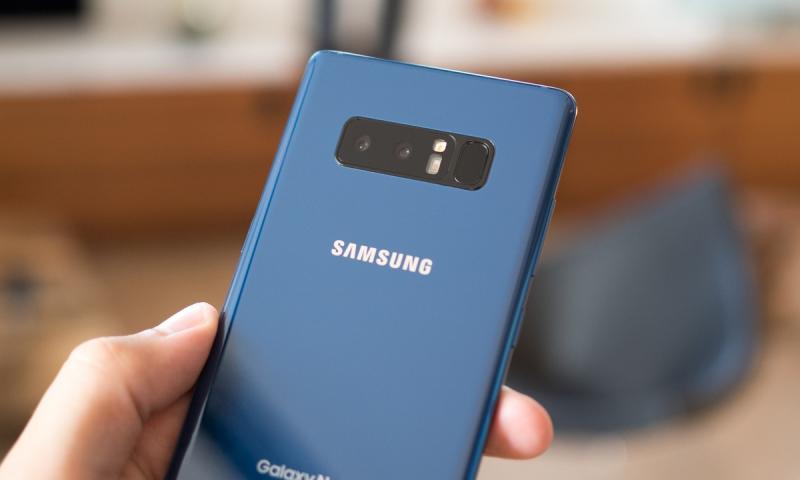 />
/> Nothing shows the immense market position of Samsung better than rebounding from the Galaxy Note 7.
Aside from rethinking its processes around battery design, manufacturing and testing, which it now implements in all of its phones, Samsung has truly moved on from the Note 7. It hasn't, however, moved on from the Note brand. There are a very limited number of brands in the consumer electronics space with the same amount of gravity as "Galaxy Note." One of the few brands more widely known, as it turns out, is also from Samsung — the Galaxy S brand.
Despite common conjecture to the contrary, Samsung wasn't about to abandon that brand equity, built up from the days when the Note was a punchline rather than an aspirational device. Samsung says surveys it conducted early on in 2017 showed consumer loyalty to the "Samsung Note" name has, quite surprisingly to many, returned to the same level as before the Note 7 was recalled. Those customers, it says, have overwhelmingly been clamoring for another Note since the day they had to return their Note 7.
So Samsung, of course, made the Galaxy Note 8. In a continued convergence of its product lines, the Note 8 is very similar to a Galaxy S8+ — but it hasn't lost some of the tricks that still make it the most capable, most desirable, and of course biggest, phone that Samsung makes. Here's what the Galaxy Note 8 is all about.
The quick take
Galaxy Note 8 Hands-on video
For our condensed take on the Galaxy Note 8 that shows the phone in action, be sure to watch our hands-on preview video! When you're done watching, read through the full preview below to get all of the fine details on the phone.
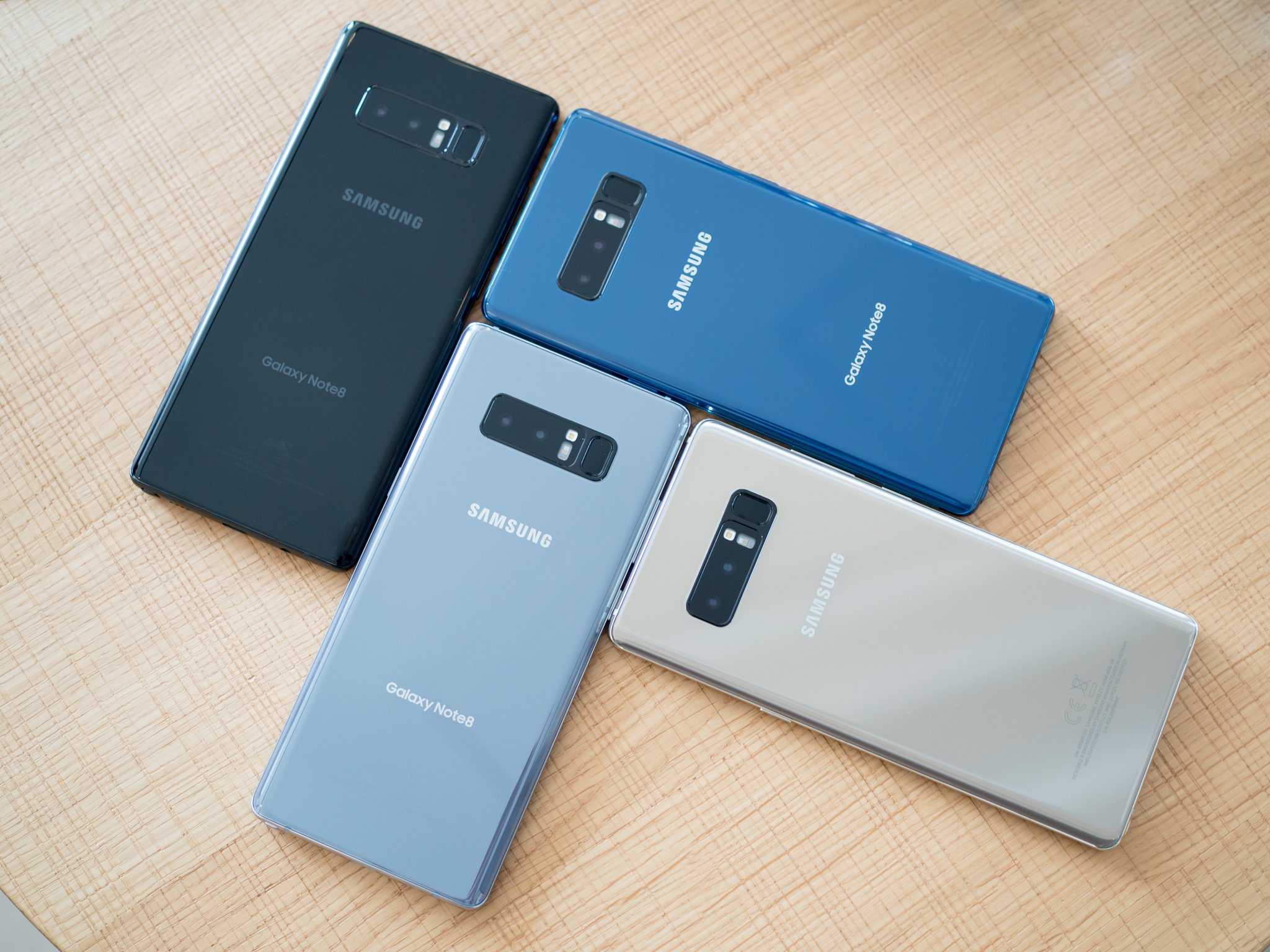
Consistency is key
Galaxy Note 8 Hardware
Samsung not having to change much in terms of design or hardware shows just how clearly it nailed the Galaxy S8 and S8+. With the exception of the Note 8's slightly more bulbous corners and generally squared-off frame, this is the same aluminum-and-glass build so many have been holding for the past six months — and it still works. It works damn well. And importantly for Samsung, it just builds its branding as another tall, tiny-bezeled phone that pushes both this phone and the Galaxy S8 series concurrently.
Samsung didn't change much, but that's because it nailed the Galaxy S8's hardware.
The aluminum frame still stands solid as ever, but with how it's finished in a glossy coating and flowing into the glass on front and back feels more like a continuation of the glass than anything else. That's particularly apparent when you look at the black Note 8, which is monolithic and featureless at a glance. Samsung's other colors stand out considerably more with this much material to coat, especially in the Maple Gold color — which isn't coming to the U.S. — that sports a super-shiny metal finish. Orchid Grey, first introduced on the Galaxy S8 and the only other U.S. color, is here as well — though it's practically a different color altogether, losing almost all of its purple in favor of a dominant light blue.
Whereas the Note 7 marked a point of really trimming things down and getting its body compact for the screen size, the Note 8 marks a pretty big size jump from last year. It's nearly a centimeter taller than the Note 7, while being a smidge wider and thicker, and at 195 grams coming in at 15% heavier. Unless you've held a Galaxy S8+ or one of the recent Plus-sized iPhones, you won't have much of a scope of just how big the Note 8 is. Its move to the same 18.5:9 aspect ratio display means you can actually wrap your hand around it, but the sheer height of the screen will make it unwieldy for many.
The biggest, most beautiful display you can find today.
The benefit of that size is getting even more screen to work with, which at its core has always been one of the main goals of the Note series. And when it comes to Samsung screens, you're getting even more of the best smartphone screen available today. Stuff like a QHD resolution and great viewing angles are all par for the course, but Samsung continues to knock it out of the park with its punchy colors and ridiculous brightness. These Super AMOLED panels are still the best when it comes to outdoor visibility, particularly with its sunlight mode that cranks brightness up over 1000 nits in certain situations. The Note 8's display doesn't take any sort of hit when integrating the stylus digitizer layer either, and it's just gorgeous.
The Note 8 includes all of the little features people have found they love to have.
The rest of what Samsung calls the "Galaxy experience" remains fully intact on the Note 8. That starts with the increasingly mundane things: the specs. The latest processor — a Snapdragon 835 in the case of the U.S. and an Exynos elsewhere — as well as 64GB of base storage and a microSD card slot. Samsung has added in a bump to 6GB of RAM as well, which will at the very least give it some room to stay quick and capable longer into the future.
More: Complete Galaxy Note 8 specs
The customer-facing parts of that Galaxy experience are the hardware features Samsung has standardized its high-end phones on: full waterproofing, wireless charging, fast charging, Samsung Pay and the continued inclusion of a headphone jack — the latter of which pairing nicely with in-box AKG earbuds. These are the things that draw so many people to buy Samsung phones, on top of the fact that they don't come at the cost of any beauty in the hardware. Samsung's engineers have done a brilliant job of cramming so many features into what's still a relatively svelte device.

The big new feature
Galaxy Note 8 Cameras
Other than its exclusive S Pen features, the one truly unique story that Samsung can tell with the Galaxy Note 8 is the camera experience. The Note 8 marks the company's first foray into dual camera sensors, putting a pair of 12MP cameras on the back of the phone — one with a standard lens, and another with a longer telephoto-like lens.
We've seen that done plenty of times before, especially as the iPhone 7 Plus popularized the concept, but where the Note 8 differentiates is in adding OIS (optical image stabilization) to the secondary camera to match the primary. That lets the secondary camera, with its roughly doubled focal length of the main camera, continue to shoot clear photos in poor lighting conditions similarly to the main camera. An f/2.4 aperture on that long lens isn't going to be as bright as the f/1.7 on the main camera, but OIS is going to make a huge difference.
The main camera isn't as exciting, mainly because it's the same as what we've already been shooting with in the Galaxy S8 and S8+. A great 12MP sensor with "Dual Pixel" auto focus, an f/1.7 lens and OIS that takes consistently awesome shots. Samsung may have made some tweaks to its software processing, but if so they aren't large enough for it to make any point to say so.
Live Focus is very much a 'me too' feature, but OIS on the secondary camera is truly useful.
The real fun comes from combining the two cameras, which happens with a switch to the "Live Focus" mode. Leveraging the pair, Samsung's software can do the now-popular function of adding artificial DSLR-like background blurring, based on the point you select in the viewfinder. You see the blur simulated in real-time, and importantly you can also adjust the blur intensity after the fact in the Gallery. One better, the Note 8 also saves a standard picture from the main camera, so you don't have to choose between the two and potentially miss an important shot.
We'll have to spend much more time with the Galaxy Note 8's cameras to see just how good its software processing is, as I'm generally skeptical of these artificial blurring systems. While they can sometimes hit, and take a great shot, they typically miss and give you something that looks no better than what a regular f/1.7 lens can already offer you on its own.
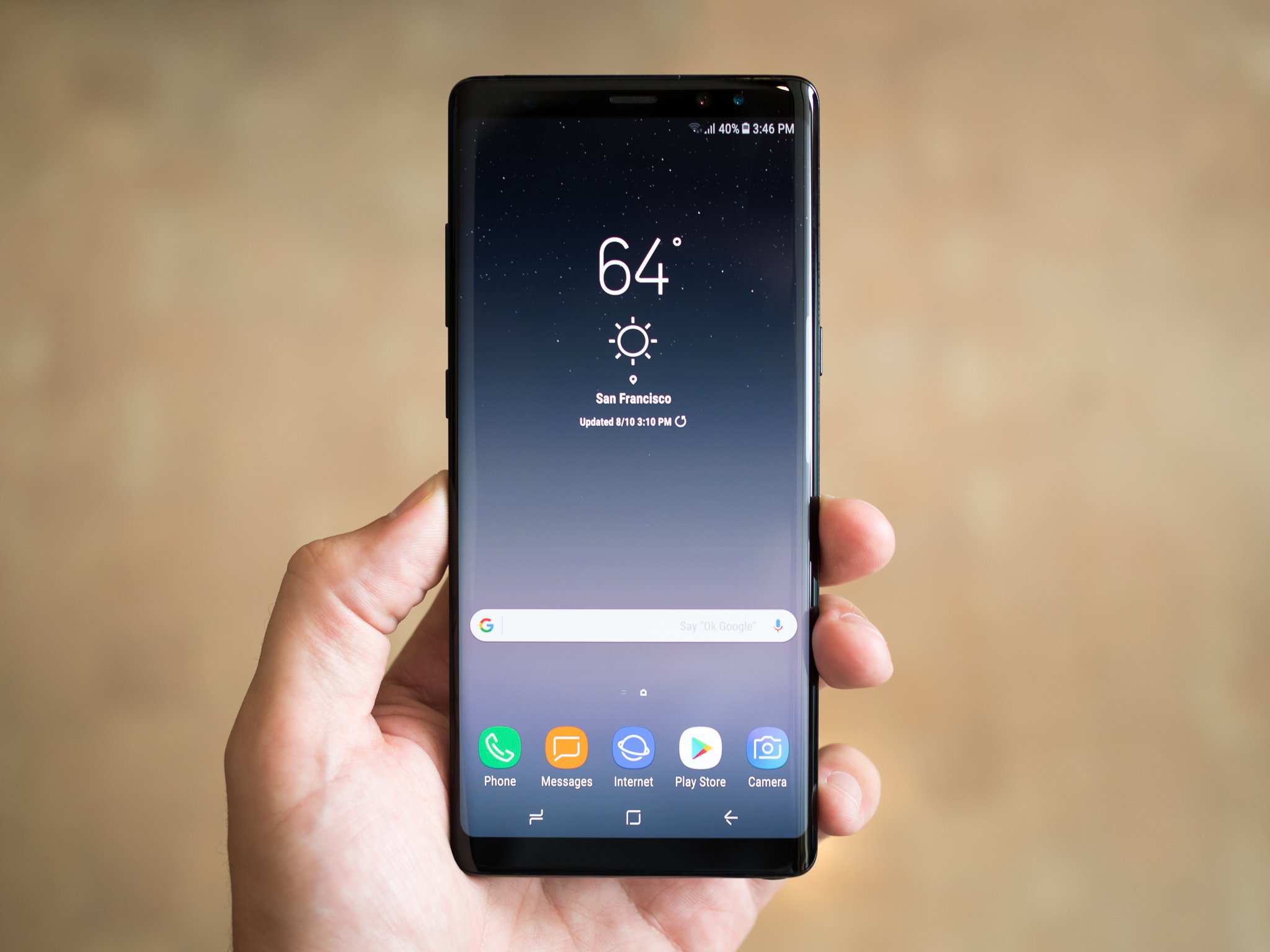
Slowly turning ship
Galaxy Note 8 Software
Each year's Galaxy Note has been a point for software refinement rather than overhaul, following up from bigger changes in the Galaxy S that came before it. Technically, the Note 8 bumps up to "Samsung Experience" (better remembered as TouchWiz) version 8.5, which is ... well, 0.4 better than the Samsung Experience 8.1 found on the Galaxy S8.
The core software experience hasn't changed from the Galaxy S7 or S8, but we didn't expect it to.
Much of the changes you'll notice are refreshes of the S Pen software and a few subtle tweaks in the interface and settings, but by and large, this is the exact same experience as you'll see on any Galaxy S8 or updated Galaxy S7 today. There's nothing particularly lust-worthy here that Galaxy S8 and S8+ owners should be upset about not having, but we can still expect the Experience 8.5 version to hit those phones in due time.
The one notable feature, if you could call it that, is the addition of a new function in the Apps Edge called "App Pair" that lets you bundle two apps together to launch directly into Multi Window mode when tapped. Samsung says that historically Note users have used Multi Window 40% more than on Galaxy S phones, so it makes sense to debut a nice little feature like this on the Note 8.
From the nerdier (and arguably very important) side of things, Samsung specifically mentions that it's working closer than ever with Google to get monthly security updates out to the Note 8 with better timeliness and consistency. Now, this messaging isn't much different from what Samsung has been saying about its flagships for about two years now, but calling out the fact that it's working with Google specifically gives me hope that we can see better consistency in updates. We'll see about that.

S Pen
The market for people who want a stylus isn't particularly large, but Samsung just has it locked down — there really is zero competition in this segment.
The S Pen hardware on the Note 8 is the same as the Note 7, which is to say it has 4096 levels of pressure sensitivity and gets that down to the screen with a 0.7 mm stylus point. The software has received a facelift here, but the same core tenets are here: Air Command lets you quickly jump into S Pen-enabled apps at any time, S Note is the one-stop-shop for note taking, and Screen Off Memo remains the easiest way to jot down ideas without unlocking your phone. You can also still use the S Pen to translate text just by highlighting it, a supremely useful feature that now supports 30 languages and complete sentence translation.
Historically, 60% of all notes start with Screen Off Memo — it's one of the best S Pen features.
The only altogether new feature is what Samsung calls "Live Message," a way to scribble a quick note and send it in a messaging app as an animated gif that shows exactly how you wrote it. Being a core part of the software Live Message can be used in any app where GIFs are supported, rather than just being restricted to Samsung's own apps. A neat feature, for sure, but also one that's likely to wear off quickly for all but the most hardcore S Pen users.
Much like the rest of the software, Samsung's S Pen-focused software is pretty well baked at this point, and the people who are still drawn to a Note for the S Pen won't be disappointed by what they get here. Not only is this the only high-end phone with a stylus, but it's also a really good stylus experience. For those who weren't lucky enough to have a Note 7 for a brief period and have been using the Note 4 or Note 5 this whole time, the Note 8 will mark a nice improvement in pressure sensitivity, stylus tracking on the screen and software capabilities.
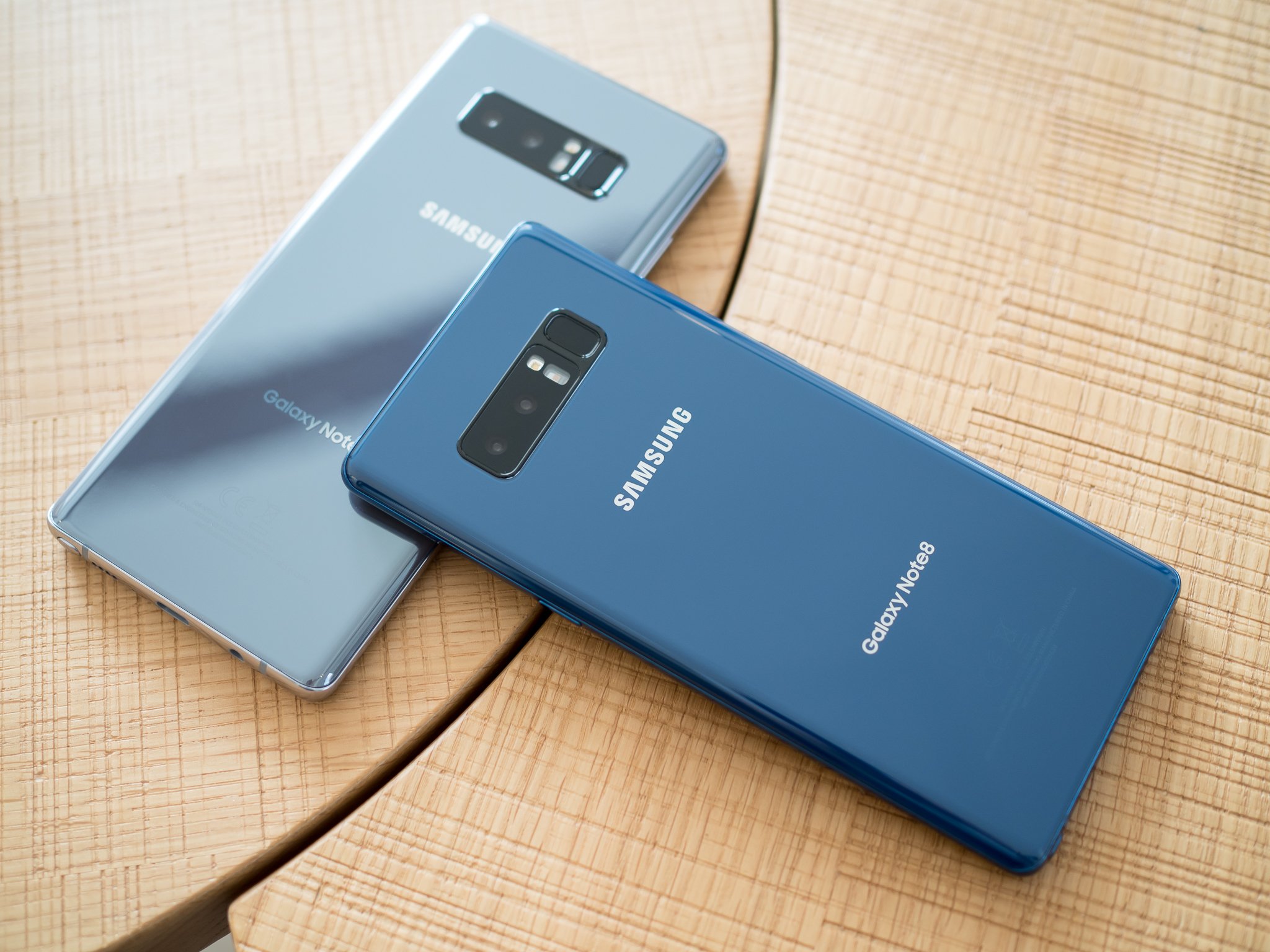
Set up to be a world-beater
Galaxy Note 8 Preview
Given the history of the Note brand in the past year, Samsung was never going to do anything particularly daring with the Galaxy Note 8. Add this to Samsung's general dominance of the high-end smartphone market, and the steady convergence of the Galaxy S and Galaxy Note lines over time, and the Note 8 was always going to be a "predictable" product.
The Galaxy Note 8 is a fantastic phone, but let's be honest: it isn't special anymore.
That isn't to say, in any way, that the Note 8 isn't a fantastic phone. It's hard to point to a single part of the Note 8 and say that Samsung made a bad decision, particularly from the standpoint of a general consumer. The phone has gorgeous iconic Samsung design, integrates all of the latest specs and technology, and reintroduces the S Pen for the die-hard Note fans out there who have been waiting for an upgrade. The only potential criticisms you can find here are the awkward fingerprint sensor placement and the sometimes-overbearing software, both of which clearly haven't deterred a record number of people from buying the Galaxy S8 and S8+ in the past six months.
It's reasonable to question why, branding loyalty aside, Samsung would release both the Galaxy S8+ and Note 8, given just how many similarities there are between the two. They're near-identical in size, have almost the same specs, and are only differentiated by the Galaxy S8+ having a larger battery and the Note 8 having a better camera and S Pen. But Samsung likely doesn't care — if you're down to choosing between two different Samsung phones to buy, the company is happy.
With that all being said, 2017 does seem to mark the point at which the Galaxy Note line is no longer special or particularly unique — it's just a great phone, alongside Samsung's other two great phones. Aside from the S Pen itself, the feature that makes this a Note, all of the specs, features and hardware that make the Galaxy Note 8 great can be found on the Galaxy S8+ (and much of the competition). There's nothing new, revelatory or novel about the Galaxy Note anymore — it's just another great high-end phone, plus a stylus. Losing some of that "special" feeling in the Note 8 isn't going to hurt sales, but it sure does feel like it marks a changing of the times.
Andrew Martonik
src: androidcentral

